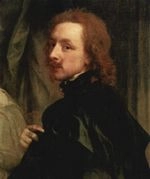How to Pronounce Anthony van Dyck
#50
Most Popular
Boost
Mar 22, 1599 Antwerp, Flemish Region, Belgium Died on 09 Dec 1641 (aged 42)
Flemish Baroque artist
AriesAnthony Van Dyck, Date of Birth, Place of Birth, Family, Facts, Age, Net Worth, Biography and More in FamedBorn.com

Flemish Baroque artist
Aries